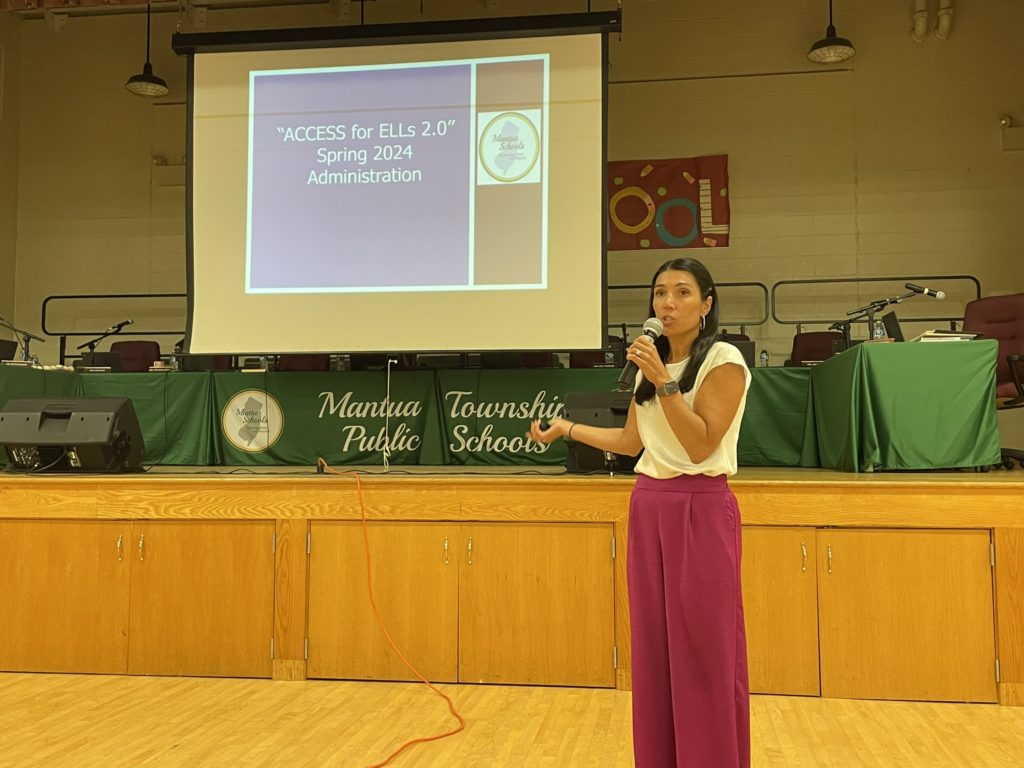
The Mantua school district’s Director of Curriculum and Technology Laura Sandy gave a presentation on ACCESS for ELL students at a board of education meeting on Sept. 9.
ELL stands for English language learner, students who comes from non-English-speaking families. ELLs are also known as multi-lingual – or ML – learners. ACCESS is the proficiency assessment given by the World-Class Instructional Design and Assessment (WIDA) consortium to help students from kindergarten through sixth grade whose first language is not English.
“We are required by New Jersey to administer ACCESS to all of our ML students in the spring,” said Sandy. “This assessment is then used to determine if students exit ML services for the following year or if they continue with our program. We also use that information, and that information is used in our school calculations for a Title III grant.”
A student test focuses on the domains of reading, writing, listening and speaking. The grading composition of overall scoring is 35% for reading and writing, and 15% for listening and speaking.
Students are then scored on a scale of 1 through 6. One is categorized as entering, two is beginning, three developing, four expanding, five bridging and six reaching. Students can graduate and exit the program when they reach a composite score of 4.5 or higher.
“We don’t have many students in the level five or six range, and that’s because once they reach a 4.5, they are no longer part of the program,” Sandy explained. “So it’s not uncommon to see a low representation in level five.”
An annual survey assesses the primary language spoken in a student’s household. This year’s results showed that of identified MLs, Cambodian, Chinese, Korean, Persian, Russian and Turkish students had 7.6% of MLs speaking, while 15.4% spoke Mandarin and 38.5% of MLs spoke Spanish.
The total number of students in the survey was also revealed during Sandy’s presentation. Three students in kindergarten were tested, as were one first grader, three second graders, two third and fourth graders and one fifth grader. No sixth graders were tested.
“You’re gonna see it starts out high and starts decreasing by grade level, which is what we want to see,” Sandy noted. “That’s telling us that our intervention services are benefiting our students and exiting the program.”
Members of the board approved of the presentation. Their next meeting is scheduled for 7 p.m. on Monday Oct. 7, at Centre City Elementary School.









